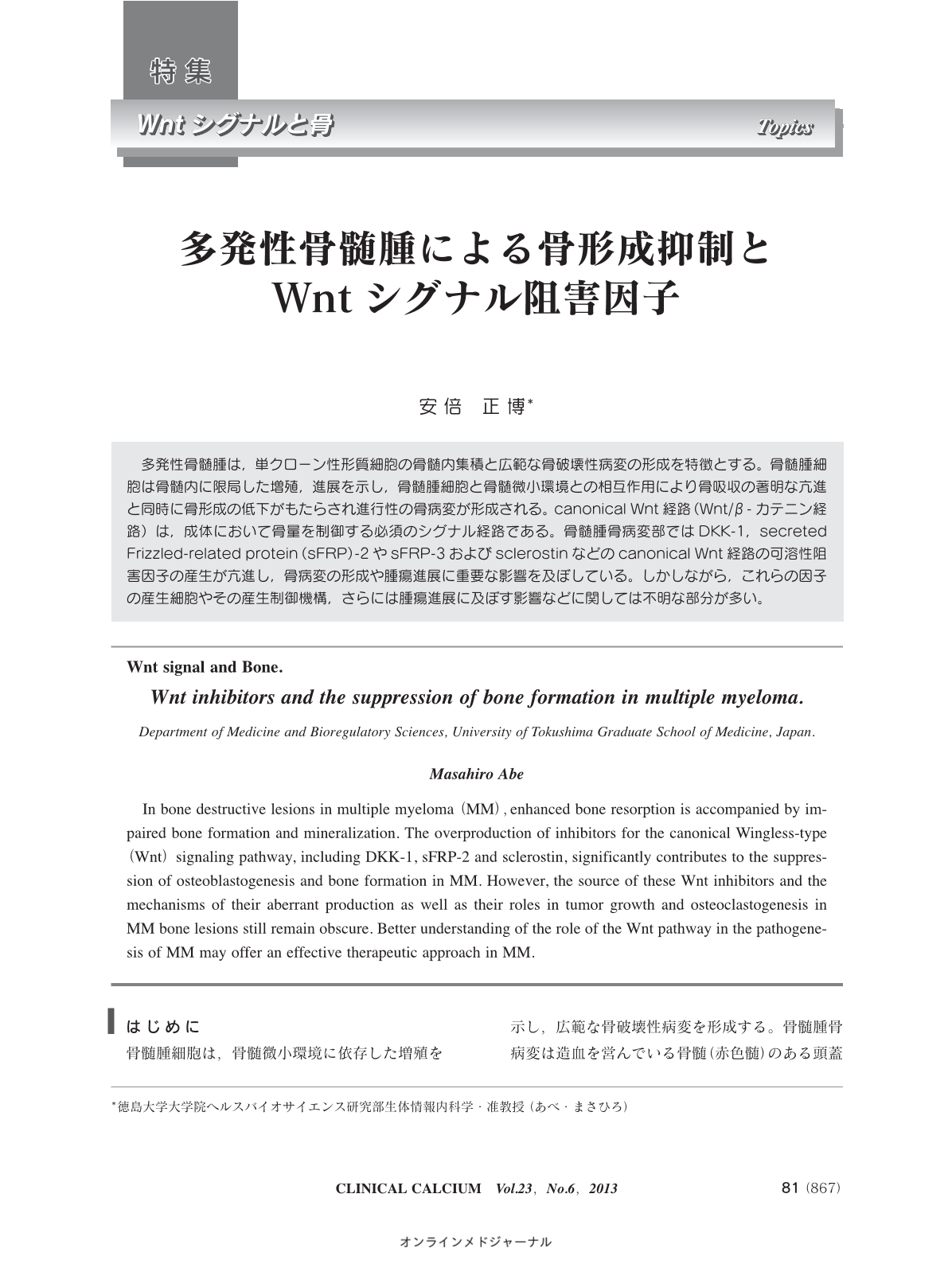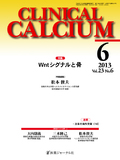Japanese
English
- 有料閲覧
- Abstract 文献概要
- 1ページ目 Look Inside
- 参考文献 Reference
多発性骨髄腫は,単クローン性形質細胞の骨髄内集積と広範な骨破壊性病変の形成を特徴とする。骨髄腫細胞は骨髄内に限局した増殖,進展を示し,骨髄腫細胞と骨髄微小環境との相互作用により骨吸収の著明な亢進と同時に骨形成の低下がもたらされ進行性の骨病変が形成される。canonical Wnt経路(Wnt/β-カテニン経路)は,成体において骨量を制御する必須のシグナル経路である。骨髄腫骨病変部ではDKK-1,secreted Frizzled-related protein(sFRP)-2やsFRP-3およびsclerostinなどのcanonical Wnt経路の可溶性阻害因子の産生が亢進し,骨病変の形成や腫瘍進展に重要な影響を及ぼしている。しかしながら,これらの因子の産生細胞やその産生制御機構,さらには腫瘍進展に及ぼす影響などに関しては不明な部分が多い。
In bone destructive lesions in multiple myeloma(MM),enhanced bone resorption is accompanied by impaired bone formation and mineralization. The overproduction of inhibitors for the canonical Wingless-type(Wnt)signaling pathway, including DKK-1, sFRP-2 and sclerostin, significantly contributes to the suppression of osteoblastogenesis and bone formation in MM. However, the source of these Wnt inhibitors and the mechanisms of their aberrant production as well as their roles in tumor growth and osteoclastogenesis in MM bone lesions still remain obscure. Better understanding of the role of the Wnt pathway in the pathogenesis of MM may offer an effective therapeutic approach in MM.



